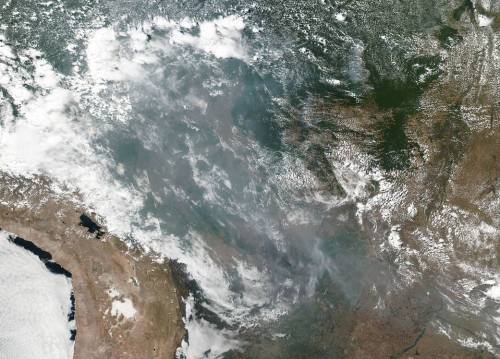Your gateway to endless inspiration
Amazon Rainforest - Blog Posts
More than Just Dust in the Wind

From space, we can see a swirling brown mass making its way across the Atlantic – dust from the Sahara Desert – the largest hot desert in the world. It’s a normal phenomenon. Every year, winds carry millions of tons of dust from North Africa, usually during spring and summer in the Northern Hemisphere.

June 2020 has seen a massive plume of dust crossing the ocean. It’s so large it’s visible from one million miles away in space.

Dust clouds this large can affect air quality in regions where the dust arrives. The particles can also scatter the Sun’s light, making sunrises and sunsets more vibrant.

Dust particles in the air are also known as aerosols. We can measure aerosols, including dust, sea salt and smoke, from satellites and also use computer models to study how they move with the wind.

Following the transport of dust from space shows us how one of the driest places on Earth plays a role in fertilizing the Amazon rainforest. There are minerals in Saharan dust, like phosphorous, that exist in commercial fertilizers, helping seed the rainforest.

Make sure to follow us on Tumblr for your regular dose of space: http://nasa.tumblr.com

Fires in the Amazon Rainforest
This natural-color image shows smoke from fires in the Amazon rainforest spreading across several states within Brazil, including Amazonas, Mato Grosso, and Rondônia. The image was collected by our VIIRS (Visible Infrared Imaging Radiometer Suite) instrument aboard the Suomi NPP satellite (a joint-partnership between NASA and the National Oceanic and Atmospheric Administration) on August 20, 2019. It’s not unusual to see fires in Brazil at this time of year, but activity in the country’s largest state, Amazonas, has been above average. Many people use fire to maintain farmland and pastures or to clear land for other purposes.
Credits: NASA Worldview, Earth Observing System Data and Information System (EOSDIS).
Make sure to follow us on Tumblr for your regular dose of space: http://nasa.tumblr.com.